Met Receives Major Gift of Late 19th-Century American Decorative Arts and Paintings from Barrie and Deedee Wigmore
- NEW YORK, New York
- /
- November 21, 2019
Barrie A. and Deedee Wigmore have promised 88 superlative examples of American Aesthetic Movement and Gilded Age decorative arts and contemporaneous paintings from their collection—one of the preeminent holdings of late 19th-century American art in private hands—to The Metropolitan Museum of Art.
The gift is part of The Met's 2020 Collections Initiative celebrating the Museum's 150th anniversary.
"In the Aesthetic Movement, art infused every aspect of one's home, and the incredible range of objects in this exceptional gift will enable The Met to evoke such an interior," said Max Hollein, Director of the Museum. "This gift also has particular resonance in The Met's 150th anniversary year, as the objects represent prime examples of American decorative arts and paintings that were created around the time The Met was formed. We are deeply grateful to Trustee Barrie Wigmore and his wife, Deedee, for their remarkable generosity."
"These works represent a truly transformative gift that will considerably enhance our strong collection by adding to areas of preexisting strength and building upon new areas of interest. The Wigmores have been collecting for the past four decades with extraordinary discernment and intelligence, and the items that will be coming to The Met are true masterworks in all media," added Alice Cooney Frelinghuysen, the Museum's Anthony W. and Lulu C. Wang Curator of American Decorative Arts.
Aesthetic Splendor: Highlights from the Gift of Barrie and Deedee Wigmore will be on view in the Museum's American Wing beginning December 2, 2019, in a gallery named for Mrs. Wigmore and devoted to decorative arts of the Aesthetic Movement of the 1870s and 1880s. The Met's temporary installation will evoke the scrupulously restored interiors of the Wigmores' home (which was constructed in the same period), with reproduction wallpapers of the same era as their collection. While a few of the works have been included in major exhibitions, most of those on display have never been seen by the public.
Speaking about the gift, Mr. and Mrs. Wigmore said: "Having our collection go to the American Wing is like having it stay in the family."
The focus of the Wigmores' collection is art dating from the 1860s to the early 1890s, a period that coincides with many significant cultural achievements in New York, including the founding of The Met in 1870. The enormous wealth earned by post–Civil War industrialists and financiers gave rise to what is known as the Gilded Age—a period when highly skilled craftspeople, mainly immigrants, produced sumptuous objects for a discerning clientele.
The Wigmores' holdings are a testament to their commitment to collecting works of the highest quality. Assembled over four decades, the collection features outstanding works by luminaries of American art. Their early focus in American painting was on members of the second generation of the Hudson River School, including multiple works by Albert Bierstadt, Sanford R. Gifford, John Kensett, Alfred Thompson Bricher, and Jervis McEntee. Because the Wigmores began collecting at an early date, they were able to acquire some of the finest examples by these leading artists. Among the highlights of their collection are the many masterful plein air (on the spot) oil sketches of the American wilderness, which they purchased at a time when these vibrant, quickly executed works were overlooked; today, they are much sought after and highly valued. These sketches provide a window into the artists' thought processes and served as inspiration for their large-scale paintings. Of particular note are the plein air study and the much larger finished canvas for Gifford's 1877–79 work An Indian Summer Day on Claverack Creek. The collection of paintings are in gilded, 19th-century frames that the artists of the Hudson River School regarded as critical to the aesthetic presentation of their work.
The Wigmores were pioneers in collecting the decorative arts, especially furniture and artistic brass furnishings, of the 1870s and 1880s, the period when the Aesthetic Movement was in full favor in America. They concentrated on premier furniture firms—including Herter Brothers and Kimbel & Cabus of New York and A. and H. Lejambre and Daniel Pabst of Philadelphia—that catered to a wealthy clientele. One of the most exceptional examples is a large Herter cabinet with delicate marquetry decoration of butterflies and spiderwebs, intricate carving, and gilding. The Wigmores were among the first to recognize the significance of "art brass" (decorative objects made of bronze), and their impressive holdings include exuberant work by principal makers, notably the Charles Parker Company in Meriden, Connecticut.
The period of the Aesthetic Movement was one in which art infused every aspect of a domestic interior, and the Wigmores have collected in nearly every medium. Their gift includes several large-scale vases from the famed Rookwood Pottery in Cincinnati, dating to its first years of operation, as well as Aesthetic silver, primarily from the Gorham Manufacturing Company in Providence, Rhode Island. The gift also includes four necklaces, three of which are among the evocative art jewelry produced by Louis C. Tiffany in the early years of the 20th century and express his interest in semiprecious stones and enameling.
This remarkable promised gift is one of many expressions of the Wigmores' deep commitment to The Met. Over the past 30 years, they have donated or made possible numerous significant acquisitions and they continue to sponsor important exhibitions and scholarly endeavors.


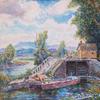
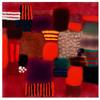



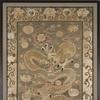
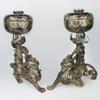




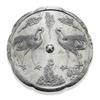
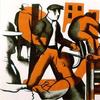
![Offering a Truce [Bested], 1895, is estimated to sell for between $1,300,000 and $1,800,000 on March 22, 2014, for The Russell: An Exhibition and Sale to Benefit the C.M. Russell Museum. Offering a Truce [Bested], 1895, is estimated to sell for between $1,300,000 and $1,800,000 on March 22, 2014, for The Russell: An Exhibition and Sale to Benefit the C.M. Russell Museum.](/images/c/a8/20/Dec10_Offering_a_Truce__Bested_300dpi100x100_c.jpg)